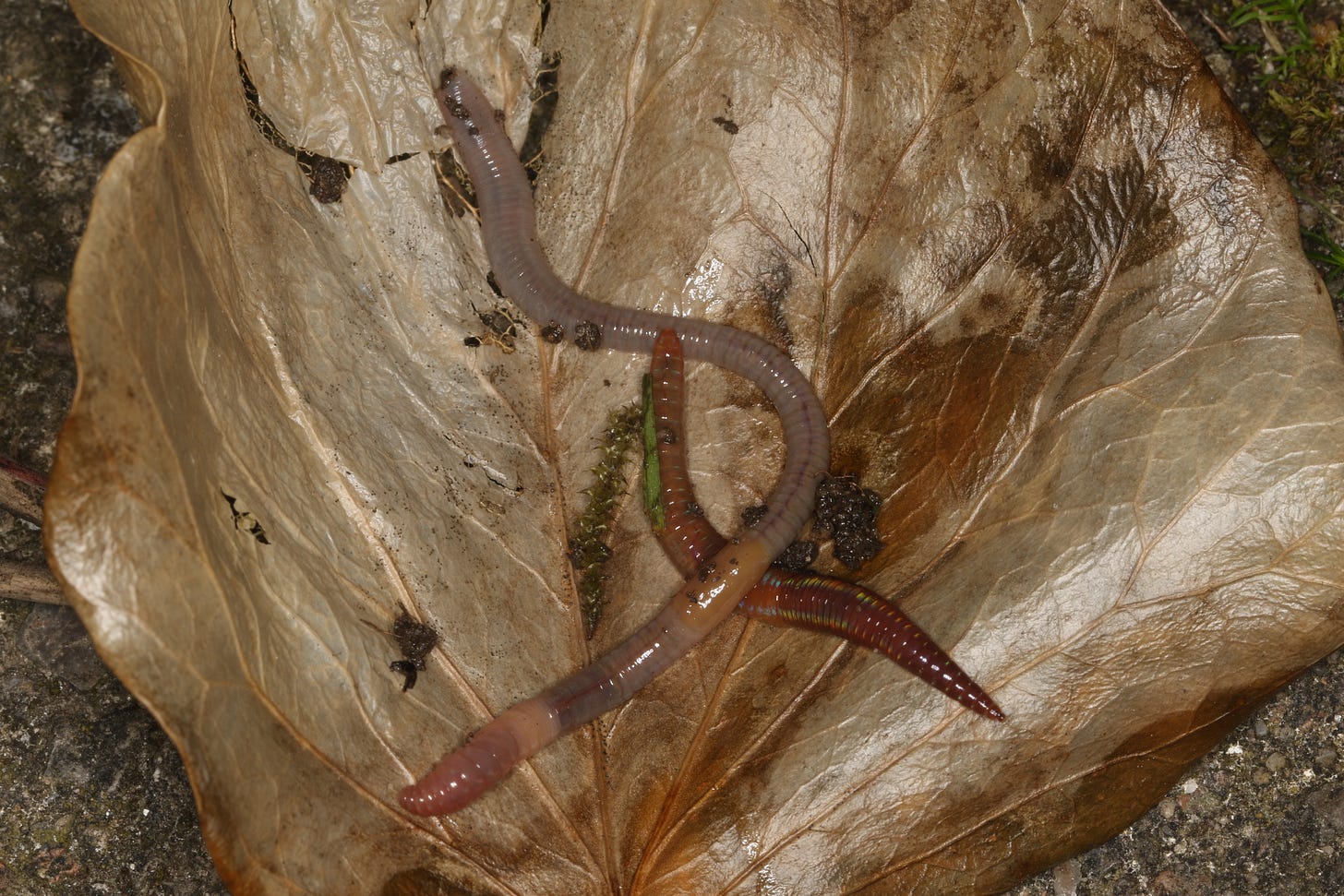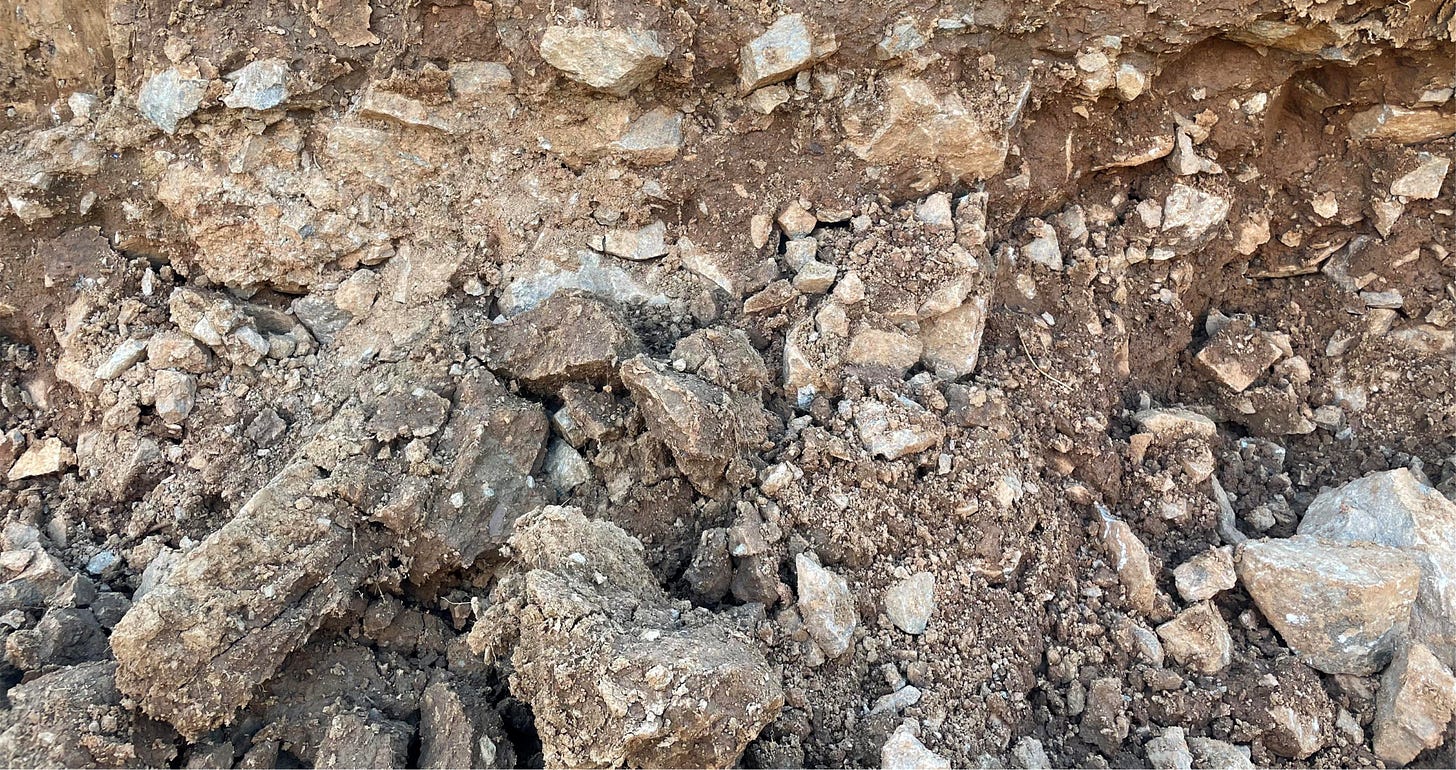Within soil, there is a “dead” organic component, a living biological component, and, the most plentiful, a mineral component. And the important pores in-between, of course. The most commonly known basic process that goes on in this mix called soil is decomposition, wherein the dead organic matter is broken down by microbes and the end result is a release of nutrients (called mineralization) that are used by plants along with the liberation of other organic products that improve the soil in many and various other ways. It’s a process familiar to almost every gardener.
But there is a vast array of other processes, much less familiar to gardeners, most of which also lead to improved soil health and thus better plants. That is, at least when the soil is maintained in a healthy way.
One of these other processes is something called “solubilization.” Put simply, it’s dissolving the mineral component of the soil. Plant nutrients (certain elements) within the soil minerals are insoluble — they cannot go into a solution that can be taken up by plants (directly via roots or, more commonly, indirectly via various soil microbes). They are, as is commonly put in popular growing literature, “unavailable.”
It takes specialized microbes (part of the oh-so-important biological, living component) to do the dissolving, thereby extracting elemental nutrients and putting them into solution. Hundreds of species of microbes provide dozens of different nutrients to plants that plant roots can’t absorb by themselves. At least 25 of these species, having been identified with this capacity, are now being considered as potential “biological fertilizers,” to be used as inoculants in suitable soils (yet still best to manage your own soil naturally).
To put this into some perspective, I’ll start with the familiar “N-P-K” narrative. When it comes to plant nutrients, this three-letter initialism (an unpronounceable anagram), is where most gardeners start AND STOP when it comes to feeding plants.
The “N” is for nitrogen, the nutrient that, simply put, makes the green stuff grow. To be clear, nitrogen doesn’t come from mineral and it’s not part of any solubilization process; but it’s the nutrient most commonly added as a “fertilizer” to home gardens and I want to make the point that in addition to the “blood from a stone” idea here, nature gives us free “fertilizer” in other ways. Nitrogen is a nutrient that comes from organic matter, not mineral. A specific group of soil microbes, called diazotrophs, put nitrogen into the soil by taking it from the air and converting it into a plant-friendly consumable form.
One of these diazotrophs (nitrogen-fixing bacteria), Thiobacillus, also converts sulfides (common in minerals but largely unavailable to plants) via solubilization into sulfates, a form that plants can use. These sulfates are particularly important in dropping the pH of overly alkaline soils.
Phosphorus, the “P” and another limiting nutrient for plant growth, is usually plentiful in soil, but is almost always found in forms that plants can’t use. Again, the soil microorganisms step up to the job and release organic acids and, in this case, phosphotases (singular enzymes), to break apart stuck-together phosphorous-based molecules into plant-available forms. Bacteria such as Pseudomonas putida, Azospirillum fluorescens, and Azospirillum lipoferum are some of the rock bleeders here.
Other bacteria within the rhizosphere (the edaphon community directly around the roots), produce organic acids that break apart non-available forms of potassium (the “K;” from the neo-Latin “kalium”). Once solubilized, part of this newly-available potassium will be held for the long-term upon soil particles (particularly clay), part will go into the soil’s water solution (in the pore spaces), and part will be taken to the roots by mycorrhizal fungi. Strains of Pantoea agglomerans, Microbacterium laevaniformans, and Pseudomonas putida are highly efficient insoluble phosphate solubilizers. Species and strains of Burkholderia, too, do a quite decent job of pulling out the K.
Beyond the NPK, another wide range of microbes reduces iron and sulfur within minerals and puts those now-available forms into solution; the processors here include, among many others, a few diazotrophs who offer it up as a “bonus” to their nitrogen-adding activities. At least one common diazotroph bacteria, Bacillus megaterium, draws zinc from mineral.
Let’s not forget every gardener’s favorite garden soil helper, the mineral-munching earthworm. Yep, not only do these wriggly guys eat up the organic matter in the soil (and your compost pile) and turn some of that into plant snacks, they dissolve the minerals (probably in cooperation with the bacterial symbionts in their guts) into useable “plant food.” Earthworms are the dominant macrofauna among the edaphon. Hence, they do their breakdown work in quantity. Here’s a partial list of what earthworms are known to solubilize: Aluminum, Calcium, Iron, Nitrogen, Phosphorous, Potassium, and Sulfur.
But don’t go out and buy earthworms, at least not just yet:
Earthworms thrive on soil with at least a minimum of organic matter and an abundance or edaphon. They do not “improve” impoverished soils.
There are non-native earthworms and they have been creating environmental havoc in much of our country.
Some portions of the U.S. do not have native earthworms.
Also, don’t dump your leftover fishing bait or extras from your vermicomposting bin into the garden.

Among home gardeners, solubilization just might be the least known and most misunderstood major process within the soil. As already said, almost every gardener thinks that organic matter is the one and only source of nutrients and once organic matter is gone or “broken down,” there are no more nutrients left to feed the plants. Solubilization is certainly slower than mineralization but it provides different yet still significant nutrients and it does so over a more dependable and longer time. Bottom line: healthy soil microbes provide, in one way or another, virtually every known major and minor nutrient needed for plant health. And then some.
As always, the “fix” to an unhealthy (in this case, nutrient-low) soil, is to support the edaphon by putting roots in the ground and leaving them there, supplying organic matter as a mulch or topdressing, and, especially in this case, encouraging a diversity of microbes with a diversity of roots and a diversity of organic matter.
The “root” part of the fix seems to be key. It turns out, not unexpectedly in such complex interactive systems, that organic sugars that ooze from plant roots along with the breakdown of organic matter could be the kick-starters for the initiation, then growth and maintenance, of these mineral-dissolving microbes. A better explanation of the value of putting roots in the ground and leaving them there is detailed in “PUTTING DOWN ROOTS” AND “PDR -2.”
Gardeners have taken their soils so far away from all natural processes that they’ve become dependent on all artificial processes (digging in soil amendments, adding artificial fertilizers, etc.), a treadmill. We do our “bit” by planting milkweed for butterflies, sowing clover seeds in our lawns, and keeping dandelions for pollinators. And yet, we can’t seem to get down to the real nitty-gritty of actually being “More Like Mother Nature.”
© Copyright, Joe Seals, 2025




